Otoplasty or Ear Pinning for Children: When and Why It’s Recommended

Otoplasty, also known as ear pinning, is a procedure that corrects protruding or misshapen ears. This procedure can benefit children who might experience teasing or self-consciousness due to the appearance of their ears. Understanding when and why otoplasty is recommended for children can help parents make informed decisions about their child’s well-being.
Reasons for Considering Ear Pinning in Children
Protruding Ears in Kids
Children with protruding ears often face social challenges and psychological distress. This can affect their self-esteem and social interactions. Otoplasty can help improve the ear’s appearance, make them less noticeable, and help children feel more confident.
Correcting Ear Deformities
Some children are born with ear deformities such as lop ear, where the tip folds down and forward, or shell ear, where certain curves are missing. Otoplasty can correct these deformities to improve ear appearance.
Accidental Injuries
In some cases, children may suffer injuries that affect the shape and structure of their ears. Ear pinning can help restore the natural appearance of the ear following such injuries.
At What Age Can Children Undergo Ear Pinning
The ideal age for children to undergo otoplasty is between five and seven years old. At this age, the ears have reached about 90% of their adult size, making it an appropriate time for children to have ear surgery. Performing the surgery before children start school can also help prevent potential teasing and self-esteem issues.
Ear Pinning Benefits for Children
Improved Appearance and Self-Esteem
One of the primary benefits of ear pinning for children is the improvement in appearance, which can significantly boost their self-esteem. Children who feel better about their appearance are more likely to engage positively in social activities and school.
Long-Term Psychological Benefits
Addressing protruding ears or ear deformities at a young age can have long-term psychological benefits. Reducing the likelihood of teasing and bullying can help children develop healthier self-images and better social skills.
Minimal Downtime and Quick Recovery
Pediatric otoplasty is performed as an outpatient procedure, meaning children can go home the same day. The recovery time is relatively short, and most children can return to their normal activities within a week or two.
Why Is Ear Pinning Recommended for Children
Preventing Teasing and Bullying
One of the most compelling reasons to consider ear pinning for children is to prevent the emotional distress caused by teasing and bullying.
Enhancing Facial Symmetry
Ear pinning can enhance overall facial symmetry, which can be particularly important for children as they grow and develop. A balanced appearance can contribute to a positive self-image and social acceptance.
Boosting Confidence
Children who are self-conscious about their ears may avoid social interactions or activities. By improving the appearance of their ears, otoplasty can boost their confidence and encourage them to participate more fully in school and social activities.
How Is Ear Pinning Performed on Children
Otoplasty is performed under general anesthesia for children. The surgeon makes an incision behind the ear to access the cartilage.
Depending on the specific case, the cartilage is reshaped, repositioned, or removed to achieve the desired appearance. The incision is then closed with sutures, which are often dissolvable.
After the surgery, the ears will be bandaged to protect them and support the new shape. Parents will receive detailed instructions on how to care for their child’s ears during the recovery period. Follow-up visits are necessary to monitor the healing process and achieve the best results.
Contact Us to Learn More
If you are considering pediatric otoplasty for your child and want to learn more about the procedure, contact us and schedule a consultation. Our team at Gardner Facial Plastics understands the importance of making an informed decision. We are committed to providing compassionate and expert care to improve your child’s confidence and well-being.


